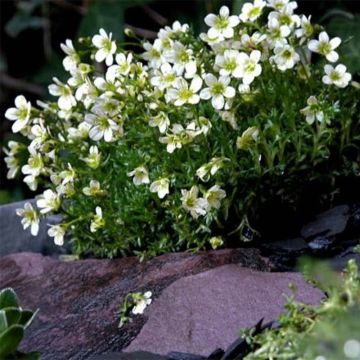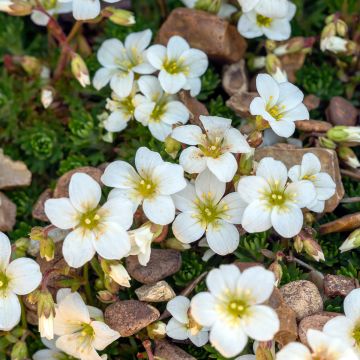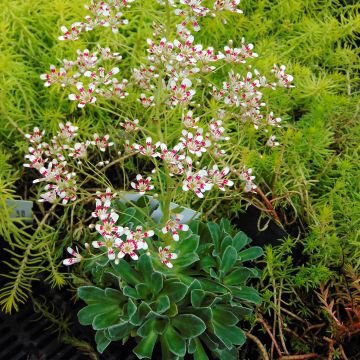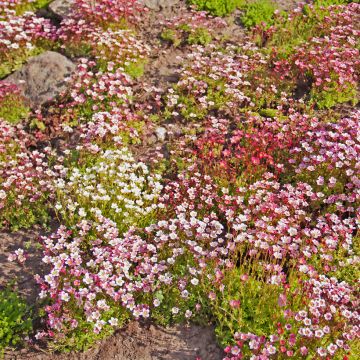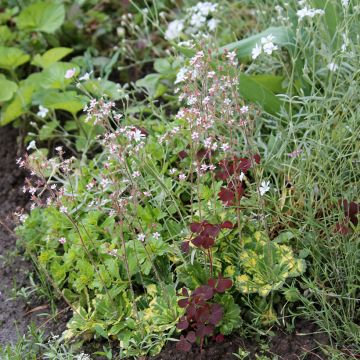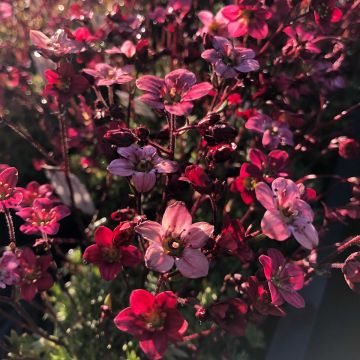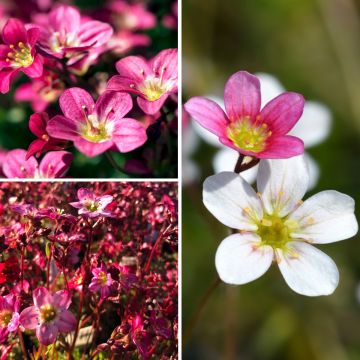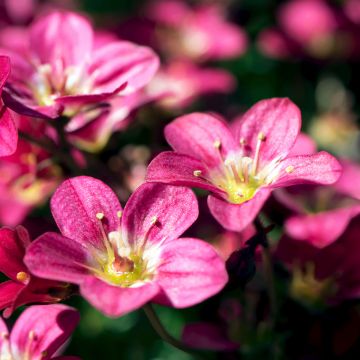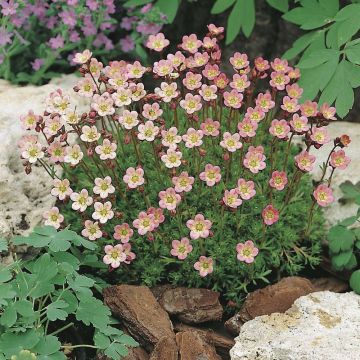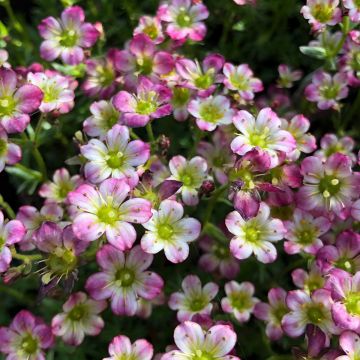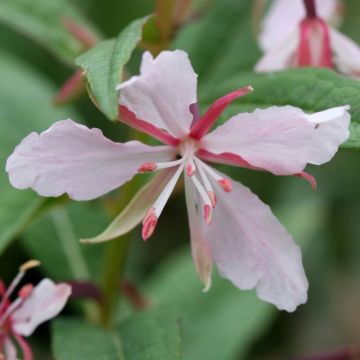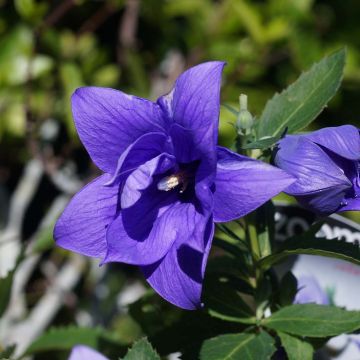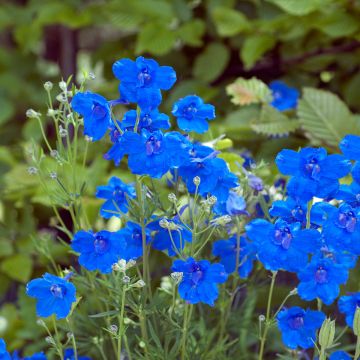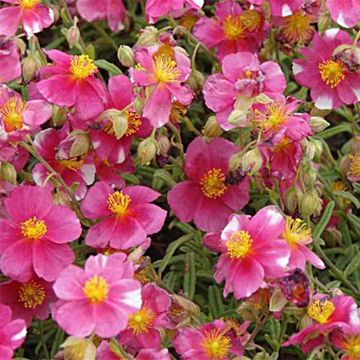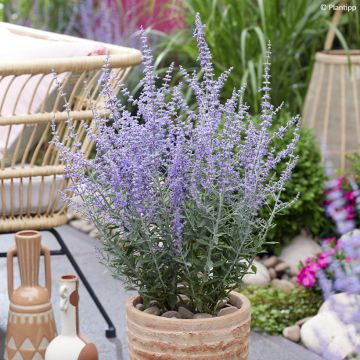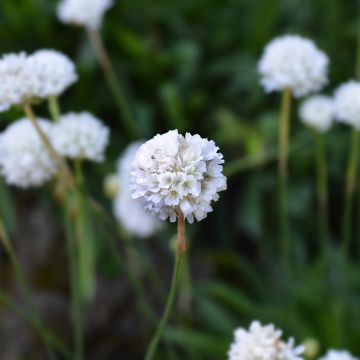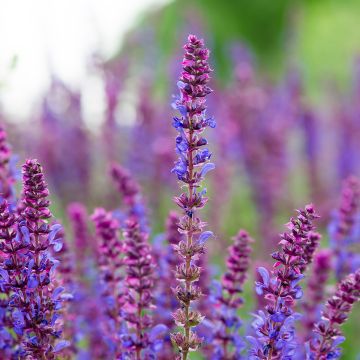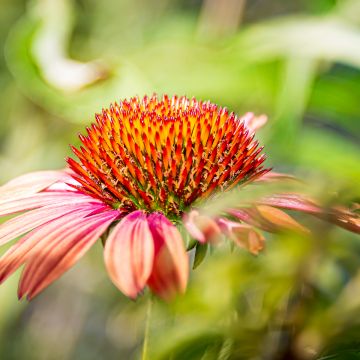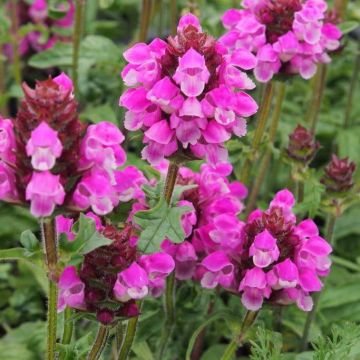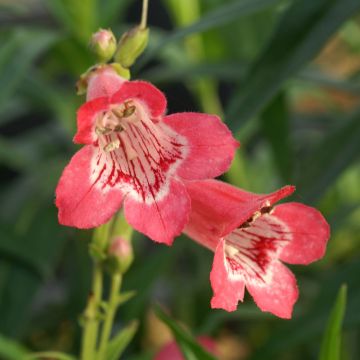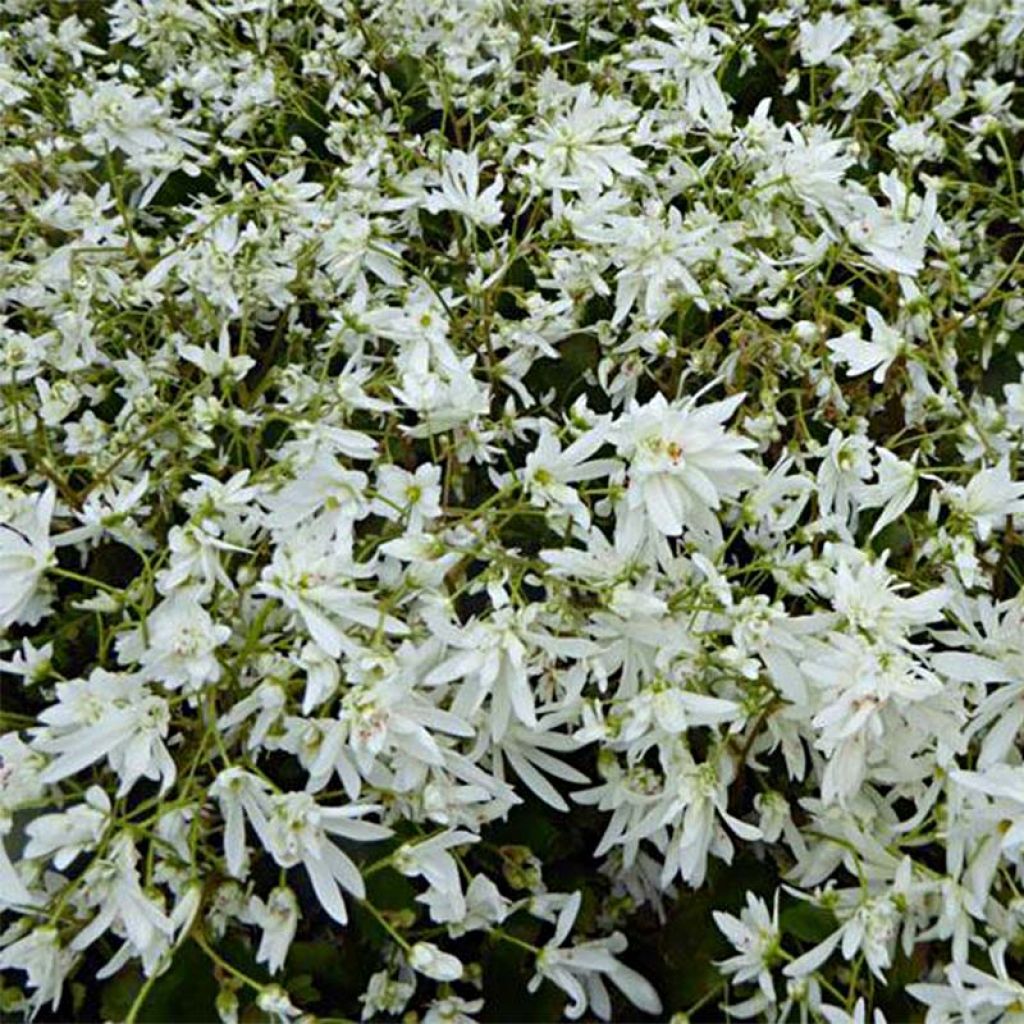

Saxifraga cortusifolia Shiranami - Saxifrage
Saxifraga cortusifolia Shiranami
Saxifraga cortusifolia Shiranami
Saxifrage
Gorgeous young plants with beautiful white flowers.
Nelly, 24/10/2023
Why not try an alternative variety in stock?
View all →This plant carries a 12 months recovery warranty
More information
We guarantee the quality of our plants for a full growing cycle, and will replace at our expense any plant that fails to recover under normal climatic and planting conditions.
From €5.90 for pickup delivery and €6.90 for home delivery
Express home delivery from €8.90.
Does this plant fit my garden?
Set up your Plantfit profile →
Description
Saxifraga 'Shiranami' is a refined small perennial of the undergrowth and shaded rocky areas. It is adorned with pretty rounded and glossy foliage. At the end of the season, it produces a generous and delicate flowering of small white, double and asymmetrical dentate flowers. Plant it in humus-rich, moist but well-drained soil, in the ground or a container. You can also cultivate it in the Japanese style, in bowls that can be placed near the house during flowering, from September to November.
Saxifraga cortusifolia var. fortunei, from the Saxifragaceae family, is native to Japanese forests. This small plant develops a rosette of deciduous leaves 20cm (8in) in diameter. They are rounded, lobed, dentate, and glossy, and measure from 5 to 8cm (2 to 3in) long. The flowering plant will reach approximately 20cm (8in) in height and spread. In this 'Shiranami' variety, the rounded and lobed foliage is particularly fine. Its colour is a medium green, slightly tinged with olive-green. At the end of summer, and until the first cold, pyramid-shaped panicles measuring 10cm (4in) long emerge from the tuft of leaves. They bear a multitude of globose flower buds that open into very pretty white flowers, distinctly asymmetrical, with a diameter of 3 to 5cm (1 to 2in). They are formed by short upper petals and numerous longer lower petals, fringed at the edges. The small heart of the flower is a bright yellow. Lean in a little closer to discover their delicate scent.
Saxifraga 'Shiranami' thrives in light, humus-rich, moist, and well-drained soil in semi-shade or full shade. These conditions can be found in a cool shady rockery or near a north-facing facade, in well-drained soil. It can also be planted at the base of deciduous trees or shrubs, taking care to remove dead leaves that could cover the plant in autumn. It also makes lovely borders, adorns walls, and decorates shaded areas of a patio. Dwarf hostas, Japanese ferns (Athyrium niponicum var. pictum), bellflowers, and Veronica umbrosa will be good companions for this extremely refined small perennial.
NOTE: This is a delicate plant to be reserved for experienced gardeners. Plant 'Shiranami' Saxifrage in any light, moist, slightly acidic soil, without excess limestone. This perennial does not tolerate heavy and wet soils in winter, nor limestone and dry soils in summer.
Report an error about the product description
Saxifraga cortusifolia Shiranami in pictures
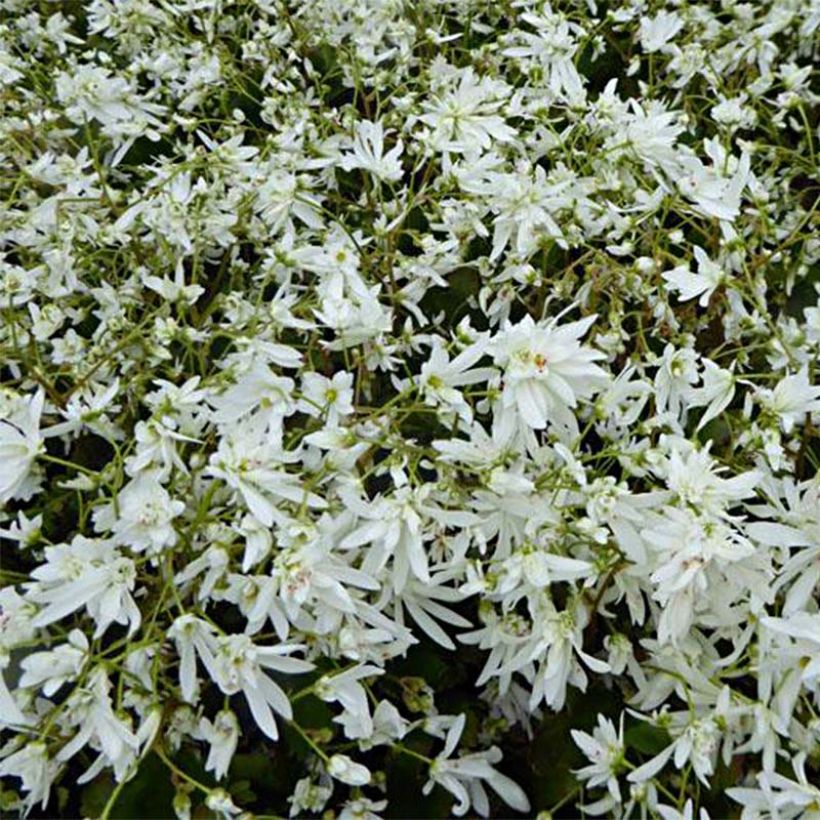

Flowering
Foliage
Plant habit
Botanical data
Saxifraga
cortusifolia
Shiranami
Saxifragaceae
Saxifrage
Cultivar or hybrid
Other Saxifraga
Planting and care
Plant from September to March, 9 plants per m², in a well-draining and rich mixture of ericaceous soil, pumice, and garden soil. It thrives in moist and humus-rich soils found in mountain woodlands and does not tolerate excessive winter moisture or summer drought. However, it can tolerate root competition from trees and bushes as long as the soil does not dry out in summer. Choose a semi-shaded to shaded position, always keeping it moist. If planted at the base of deciduous trees or bushes, remove any fallen autumn leaves covering the clump. It is susceptible to attacks from aphids, gastropods, and vine weevils.
Planting period
Intended location
Care
-
, onOrder confirmed
Reply from on Promesse de fleurs
Summer flowering perennials
Haven't found what you were looking for?
Hardiness is the lowest winter temperature a plant can endure without suffering serious damage or even dying. However, hardiness is affected by location (a sheltered area, such as a patio), protection (winter cover) and soil type (hardiness is improved by well-drained soil).

Photo Sharing Terms & Conditions
In order to encourage gardeners to interact and share their experiences, Promesse de fleurs offers various media enabling content to be uploaded onto its Site - in particular via the ‘Photo sharing’ module.
The User agrees to refrain from:
- Posting any content that is illegal, prejudicial, insulting, racist, inciteful to hatred, revisionist, contrary to public decency, that infringes on privacy or on the privacy rights of third parties, in particular the publicity rights of persons and goods, intellectual property rights, or the right to privacy.
- Submitting content on behalf of a third party;
- Impersonate the identity of a third party and/or publish any personal information about a third party;
In general, the User undertakes to refrain from any unethical behaviour.
All Content (in particular text, comments, files, images, photos, videos, creative works, etc.), which may be subject to property or intellectual property rights, image or other private rights, shall remain the property of the User, subject to the limited rights granted by the terms of the licence granted by Promesse de fleurs as stated below. Users are at liberty to publish or not to publish such Content on the Site, notably via the ‘Photo Sharing’ facility, and accept that this Content shall be made public and freely accessible, notably on the Internet.
Users further acknowledge, undertake to have ,and guarantee that they hold all necessary rights and permissions to publish such material on the Site, in particular with regard to the legislation in force pertaining to any privacy, property, intellectual property, image, or contractual rights, or rights of any other nature. By publishing such Content on the Site, Users acknowledge accepting full liability as publishers of the Content within the meaning of the law, and grant Promesse de fleurs, free of charge, an inclusive, worldwide licence for the said Content for the entire duration of its publication, including all reproduction, representation, up/downloading, displaying, performing, transmission, and storage rights.
Users also grant permission for their name to be linked to the Content and accept that this link may not always be made available.
By engaging in posting material, Users consent to their Content becoming automatically accessible on the Internet, in particular on other sites and/or blogs and/or web pages of the Promesse de fleurs site, including in particular social pages and the Promesse de fleurs catalogue.
Users may secure the removal of entrusted content free of charge by issuing a simple request via our contact form.
The flowering period indicated on our website applies to countries and regions located in USDA zone 8 (France, the United Kingdom, Ireland, the Netherlands, etc.)
It will vary according to where you live:
- In zones 9 to 10 (Italy, Spain, Greece, etc.), flowering will occur about 2 to 4 weeks earlier.
- In zones 6 to 7 (Germany, Poland, Slovenia, and lower mountainous regions), flowering will be delayed by 2 to 3 weeks.
- In zone 5 (Central Europe, Scandinavia), blooming will be delayed by 3 to 5 weeks.
In temperate climates, pruning of spring-flowering shrubs (forsythia, spireas, etc.) should be done just after flowering.
Pruning of summer-flowering shrubs (Indian Lilac, Perovskia, etc.) can be done in winter or spring.
In cold regions as well as with frost-sensitive plants, avoid pruning too early when severe frosts may still occur.
The planting period indicated on our website applies to countries and regions located in USDA zone 8 (France, United Kingdom, Ireland, Netherlands).
It will vary according to where you live:
- In Mediterranean zones (Marseille, Madrid, Milan, etc.), autumn and winter are the best planting periods.
- In continental zones (Strasbourg, Munich, Vienna, etc.), delay planting by 2 to 3 weeks in spring and bring it forward by 2 to 4 weeks in autumn.
- In mountainous regions (the Alps, Pyrenees, Carpathians, etc.), it is best to plant in late spring (May-June) or late summer (August-September).
The harvesting period indicated on our website applies to countries and regions in USDA zone 8 (France, England, Ireland, the Netherlands).
In colder areas (Scandinavia, Poland, Austria...) fruit and vegetable harvests are likely to be delayed by 3-4 weeks.
In warmer areas (Italy, Spain, Greece, etc.), harvesting will probably take place earlier, depending on weather conditions.
The sowing periods indicated on our website apply to countries and regions within USDA Zone 8 (France, UK, Ireland, Netherlands).
In colder areas (Scandinavia, Poland, Austria...), delay any outdoor sowing by 3-4 weeks, or sow under glass.
In warmer climes (Italy, Spain, Greece, etc.), bring outdoor sowing forward by a few weeks.

































